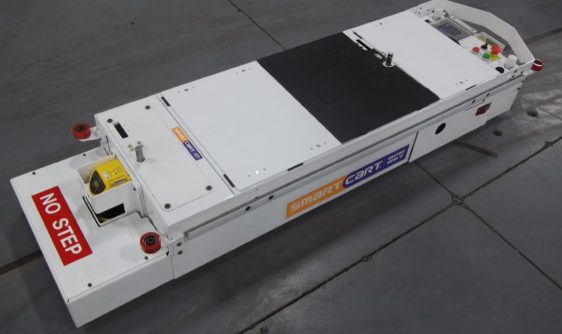
5 Ways Automated Guided Vehicles Improve Production
AGVs or Automated Guided Vehicles are driverless vehicles that improve manufacturing flexibility and production flow. AGVs have been around for more than six decades and are becoming more widespread with their vast improvement of navigation technologies. Today, AGVs range in complexity and can greatly simplify tasks that previously needed human workers at a greater cost. Let’s examine five advantages of incorporating AGVs into a production line.
- Reduction of Labor and Utility Costs
Although the initial investment into AGVs is high, they are a one-time purchase. In comparison with, for example, a forklift driver whose wages and benefits over time increase exponentially, AGVs save money in the long run. Because AGVs don’t need overtime pay, they don’t take breaks and they don’t use PTO, the ongoing costs that accompany human personnel are eliminated.
Installation for AGVs is quicker, easier, and more cost-effective in comparison with larger conveyor systems. Making turns with the AGVs is as simple as following magnetic tape versus purchasing costly curves for your conveyor system. AGVs not only lower labor cost, but they may also reduce utility cost because AC units are not needed to keep warehouse personnel cool during summer months.
- Increased Accuracy and Flexibility
Human error is inevitable. AGVs replace the human element and therefore reduce inaccuracies and waste leading to overall better productivity. Another primary advantage of AGVs is flexibility.
Large systems can be invasive and permanent whereas AGVs provide easy modification of guide paths. AGVs will operate as it is programed 100% of the time. They are not affected by environmental distractions or boredom of mundane tasks.
- Product Traceability
Every detail of material handling can be tracked by AGV computer-guided technology. This technology allows warehouse personnel to make adjustments to increase efficiency and productivity with ease.
- Reduced Damage to Material
As mentioned above, AGVs advanced navigation methods enable movement to be programmed at a predictable and consistent speed. This technology enhances the consistency necessary for warehouse operations, for example, in the distribution and supply chain industries.
- Safety
Safety features are a key element in the advantages of AGVs. Many are packed full of sensors, lasers, and cameras that communicate with the ERP letting the vehicle know to stop if there is anything in its path. This results in fewer accidents than perhaps a forklift being operated by a person. In addition to safety sensors, AGVs can operate in hazardous conditions that may be harmful to people (dust, debris, paint fumes, etc.). Lastly, the potential liability of an injured or sick worker is much greater than the repair costs of a damaged AGV.
All in all, AGVs are extremely profitable tools that can automate dangerous, repetitive and/or costly tasks. Ultimately this leads to increase profit by allowing you to keep more revenue in your pocket and increase your bottom line.





